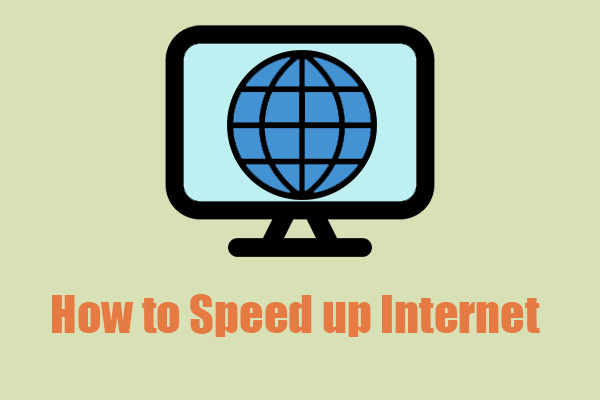High Ping over Internet Adapter
Ping refers to the time it takes for a signal to travel between the source and the target host. It is useful for testing and verifying the accessibility of a host on an Internet Protocol network.
Obviously, we prefer a lower ping than a higher one because it indicates less delay and smoother user experience. Some of you might get abnormal ping spikes on the network adapter while playing PC games or streaming videos.
Why is your ping so high? There are various factors that can contribute to this issue, including:
- Router location.
- Concurrent apps and programs.
- Outdated drivers.
- Network congestion.
- Resource-hogging background activities.
Below, we’ve listed several effective workarounds to this frustrating problem. Get started!
How to Optimize Internet Adapter Settings for Lower Ping
To lower your ping by optimizing internet adapter settings, you can check your router, try MiniTool System Booster, update your network drivers, modify internet adapter settings, switch to a different server, and disable SysMain service.
Way 1: Check Your Router
When you encounter high latency on your computer, one of the most common remedies is to restart your router. By doing so, it will clear cached internet data in its memory.
Ideally, the distance between your computer and router should be as close as possible. Meanwhile, any barriers between them, like walls, might also trigger a lagging connection. Beyond that, running the latest firmware is also important.
Way 2: Perform MiniTool System Booster
The culprit behind high ping might be the unstable internet connection or the mass of background processes. Here, a PC optimizer, MiniTool System Booster, can help you check and handle both of these issues at once.
This program works well in Windows 11/10/8/8.1/7, and it supports optimizing your computer to ensure peak performance.
With its cutting-edge features, MiniTool System Booster can elevate your computing experience by boosting your internet connection, closing unnecessary background apps, releasing more free memory, etc.
Now, let’s see how to optimize internet adapter Settings for lower ping with this tool:
1. Download and install this program to enjoy a 15-day free trial.
MiniTool System Booster TrialClick to Download100%Clean & Safe
2. Diagnose and speed up network connection.
Step 1. Launch it and click on Performance Home to select Deepclean from the drop-down menu.
Step 2. Click on START CLEAN to start cleaning your PC thoroughly.
The first NetBooster task is able to unleash and increase hidden internet speed and stability. After scanning, click on OPTIMIZE NOW to start the optimization.
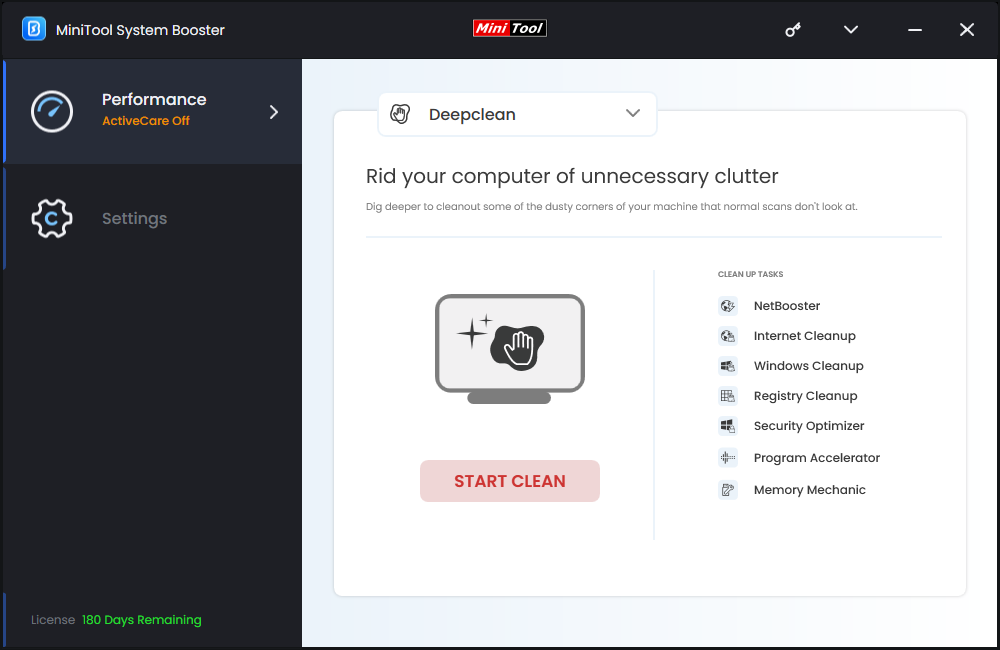
For the remaining cleanup tasks, you can run them in order or skip some as per your needs.
3. Terminate bandwidth-hogging background processes.
Some apps may eat up bandwidth silently in the background, resulting in ping and lag spikes. To fix it,
Step 1. Select Toolbox from the top menu > click Process Scanner.
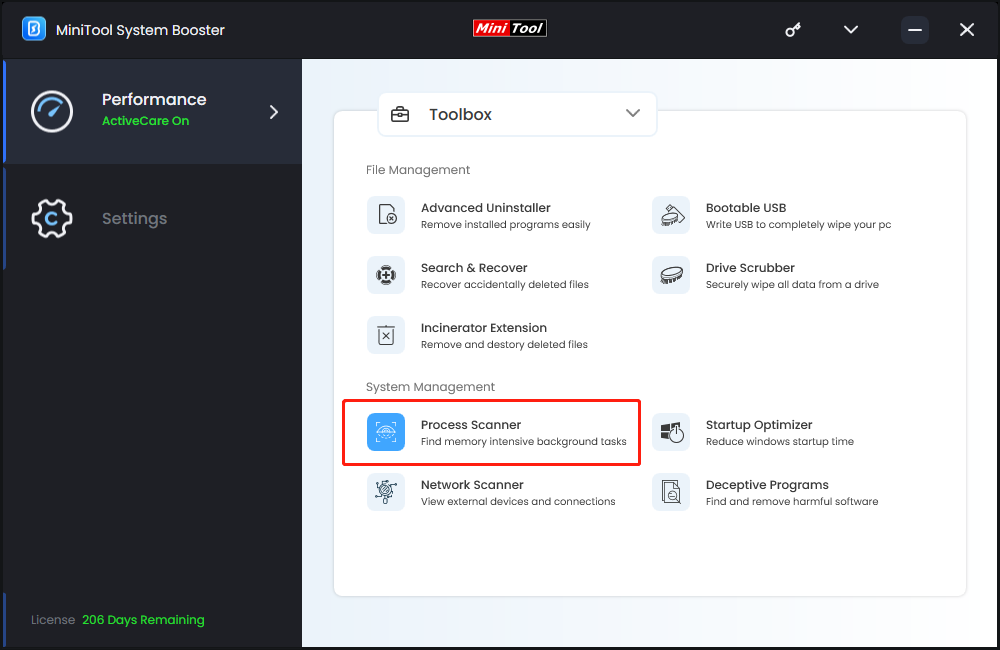
Step 2. Hit Scan now and go to the Network Processes section to terminate bandwidth-hogging applications after scanning.
Way 3: Update Your Network Drivers
Outdated network drivers may limit the adapter’s performance or cause compatibility issues. Therefore, please make sure to keep your drivers up-to-date.
Here’s how to update network drivers in Device Manager.
Step 1. Press Win + X and select Device Manager from the menu.
Step 2. Expand Network adapters.
Step 3. Right-click on your network adapters > select Update driver.
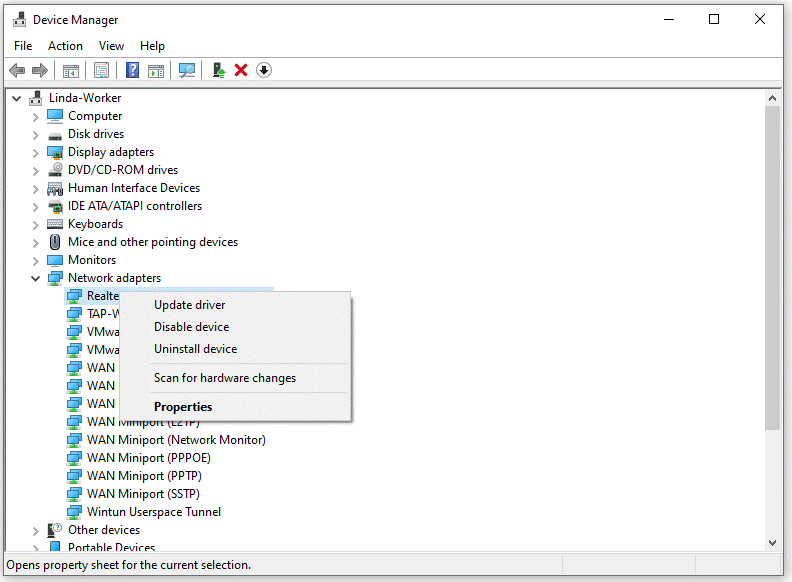
Step 4. Click Search automatically for drivers and then follow the wizard to complete the update.
Way 4: Modify Internet Adapter Settings
When playing online games, conducting real-time video communication, or using remote Desktop, a slow network speed is extremely annoying.
By modifying the settings of the network adapter, it can reduce the network latency to some extent. At the same time, it also improves the network response speed and overall performance.
Follow these steps to make some changes to the adapter:
Step 1. Open Control Panel through the search bar.
Step 2. Set View by to Large icons > locate & click Network and Sharing Center.
Step 3. In the left-side panel, select Change adapter settings.
Step 4. Right-click on your active adapter > select Properties > tap on the Configure button.
Step 5. In the Properties box, move to the Power Management tab > uncheck the box that says Allow the computer to turn off this device to save power.
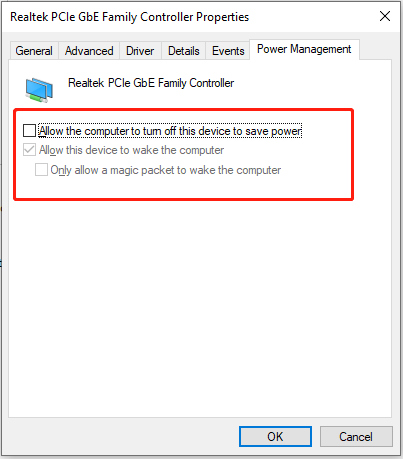
Step 6. Go to the Advanced tab and then adjust the following parameters for peak performance.
- Adaptive Inter-Frame Spacing– Disabled
- ARP Offload– Disabled
- Flow Control– Disabled
- Gigabit Master Slave Mode – Auto Detect
- Interrupt Moderation – Disabled
- Interrupt Moderation Rate – Off
- IPv4 Checksum Offload – Disabled
- Jumbo Packet – Disabled
- Large Send Offload V2 (IPv4) – Disabled
- Large Senf Offload V2 (IPv4) – Disabled
- Speed & Duplex – Auto Negotiation
- UDP Checksum Offload (IPv4) – Disabled
- UDP Checksum Offload (IPv6) – Disabled
Way 5: Change to a Different Server
Another culprit of high ping on the network might be your server. The performance and capacity of each server are limited. The server you connected to could be overloaded due to popular games or videos. What happens then is a problem of handling incoming requests and higher latency.
In this case, you can consider connecting to the closest server to your physical location or public servers, such as Google DNS servers or Cloudflare DNS servers.
Way 6: Disable SysMain Service
Service Host Superfetch (SysMain) is a Windows service that preloads frequently used applications into memory to reduce loading times. However, the operation of this service will potentially cause high ping. Disabling it should be of some help.
The following are the detailed steps:
Step 1. Press Win + R to bring up the Run dialog box.
Step 2. Type services.msc and hit Enter to open the Service console.
Step 3. Scroll down to find the SysMain service > double-click on it.
Step 4. In SysMain Properties, click the drop-down menu for Startup type > select Disabled > hit the Stop button.
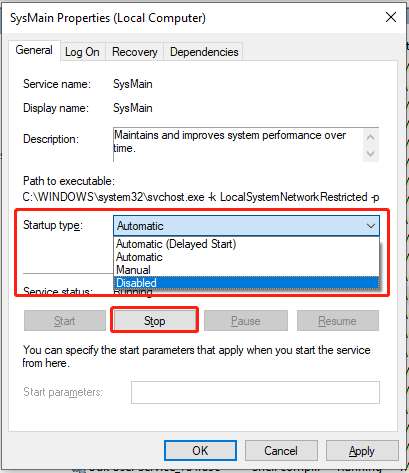
Step 5. Then hit OK to save the changes.
Conclusion
This post shares how to say goodbye to slow internet speed. In addition, it’s highly recommended that you use MiniTool System Booster to tune up your device periodically.
For more queries about our product, please feel free to consult us via [email protected]. We will get back to you as soon as possible.


